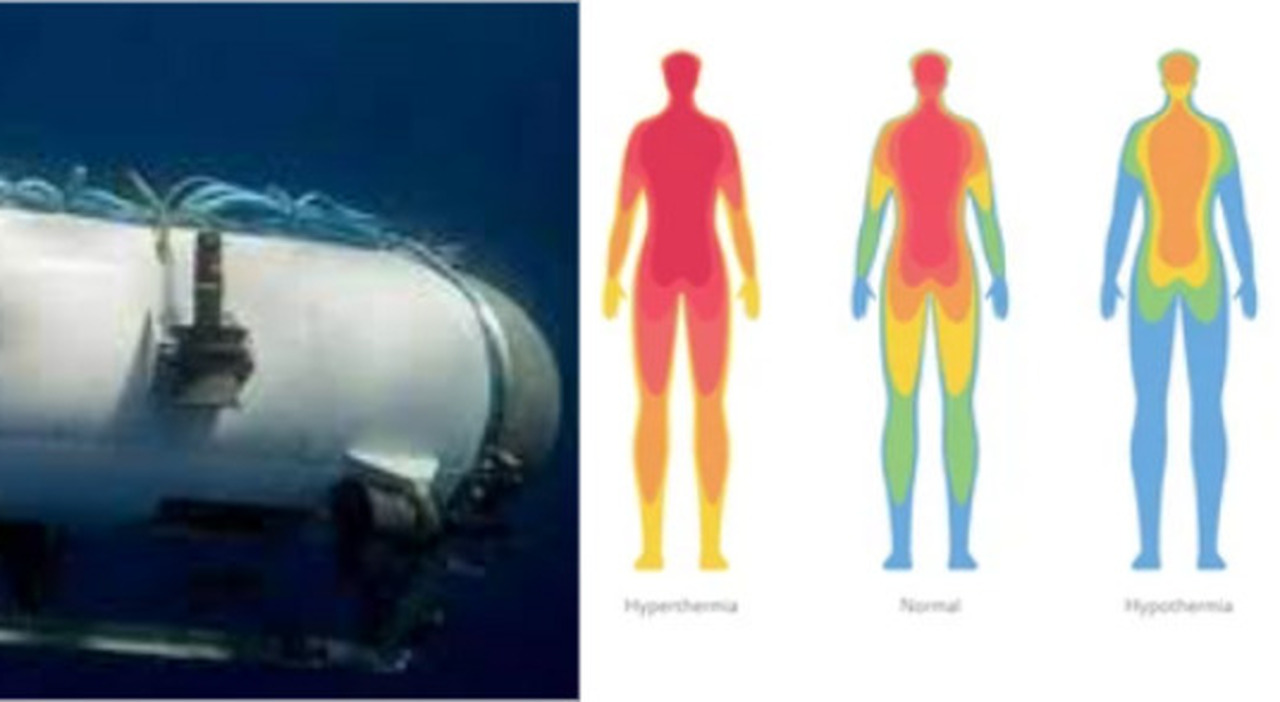Gradual suffocation, hypothermia and panic attacks: these are the chilling health consequences of being trapped in a submarine. To provide the details is a US Navy expert.
In a scientific article published last month in a medical journal, Dr. Dale Molé, former director of submarine medicine and radiation for the US Navy, detailed the “hostile” environment aboard commercial submarines: passengers face issues such as low oxygen supplies, toxic carbon dioxide levels and plummeting temperatures.
The situation of the submarine Titan
The Titan craft still missing will have a scrubber on board carbon dioxide to remove the toxic gas excess that builds up as passengers exhale into the confined space, but in most vessels this will be of limited capacity. The scrubber is a device that allows to reduce the concentration of substances present in a gaseous stream, usually dusts and acidic micropollutants. These devices find wide application in the fume purification systems of various chemical plants.
There is also a risk of hypothermia due to low temperatures in the deep ocean, as well as hyperventilation induced by panic attacks, which can use up more precious oxygen.
Dr Molé’s article was published in a scientific journal on May 29, just 20 days before the ship Titan lost contact with its mother ship, leaving five people trapped. According to the US Coast Guard, the submarine has just 40 hours of oxygen.
A few hours ago, Dr Molé declared that it is a “race against time” to save passengers, if they have not already died due to a “catastrophic rupture of the pressure vessel”.
What happened
The ship Titan, which was visiting the wreck of the Titanic, sank at 8:00 am EST Sunday about 400 miles southeast of St John’s, Newfoundland. She lost contact with the mother ship at 9.45am, after an hour and 45 minutes of submersion.
With no trace of the vesselthe Titanic’s five tourists – including a British billionaire, a French maritime expert, a British businessman and one of Pakistan’s richest men with his son – are facing the double threat of decreasing oxygen and extreme cold two miles below the surface.
There is a possibility that Titan is on the surface of the ocean, but since the passengers have been sealed inside the main capsule by 17 bolts that can only be opened from the outside, they are trapped and could suffocate if not found at the sooner.
The expert’s point of view
In his work, published in the journal Ciottone’s Disaster Medicine, Dr. Molé said: “Crew trapped in a sunken ship or submarine faces many physiological challenges, including toxic gases, exposure to high environmental pressures and hypothermia”.
Dr Molé said: ‘Whenever humans are confined to an airtight space, most people think of oxygen, but carbon dioxide is actually a bigger concern. In a submersible, they’ll have a carbon dioxide scrubber. If battery power was lost, that system would no longer work.” A scrubber removes carbon dioxide from the atmosphere, making the air safe to breathe.
Dr Molé said: ‘When people inside breathe in oxygen, they breathe it out and it goes from 21% to 17% oxygen. But they breathe out carbon dioxide, which has to be removed because otherwise it becomes toxic. People inside will have difficulty breathing, their breathing depth will increase. They will have headaches and will gradually become unconscious. The increased level of carbon dioxide is the first factor that kills people in an airtight environment, not the level of oxygen.
If the submersible is not found within the next 40 hours, Dr Molé said: ‘Once the ability to remove carbon dioxide from the internal atmosphere is lost, this will be the element that will lead to the lethal event.’ He explained: “It’s like putting a bag over your head. They will have a feeling of suffocation or air hunger, and then unconsciousness will follow.’
Hypothermia is another significant risk to people on board. Dr Molé said: ‘Inside a small submersible like this, the electronic equipment on board generates some internal heat and the occupants generate heat, as it is not a very large space. But with the central sphere in contact with the ocean, it will quickly become very cold. The average ocean temperature is 41 degrees Fahrenheit (5° Celsius, ed.). At first the passengers will start to shiver to try and generate heat, thus consuming more oxygen, and then often some of the first things to suffer are the judgements. They will then lose the ability to use their hands and then gradually fall into unconsciousness,’ said Dr Molé.
And he added: “You need to try to stay as calm as possible and turn off electrical equipment as much as possible to conserve battery energy and make sure you have enough power for the purifiers.” Another possibility is “some sort of accident that was more like a catastrophic pressure vessel rupture,” said Dr Molé. He added: “It happens so quickly that you don’t realize what happened.” . If that were the case, the people on board would have died instantly, he added.
If the submersible is still intact, Dr Molé said the passengers should not yet suffer adverse health effects. Based on the advertised 96 hours of oxygen or life support, everything is assumed to be functioning normally. Stuck in an increasingly stressful situation, the submarine’s passengers might as well panic. Symptoms of a panic attack they include increased heart rate, shortness of breath, tremors, and muscle tension. People may feel dizzy, nauseous, and lightheaded, and experience shaking and sweating.
Read the full article
on The Messenger
